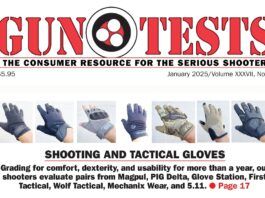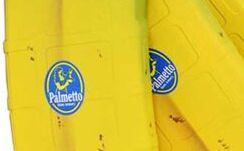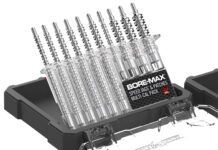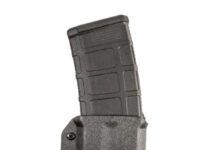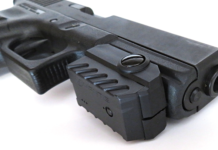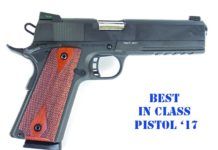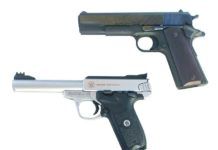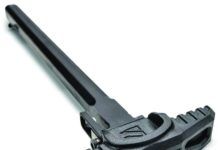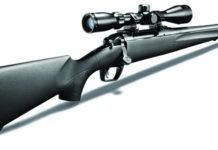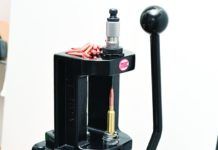Real Avid Offers New Gun Cleaning, Assembly, and Gun DIY Tools
DeSantis Gunhide Introduces New Quantico Mag Pouch
Best Guns & Gear for 2023
Optics-Ready Holsters: We Test Carry Scabbards for Red Dots
Gun Tests Best Guns & Gear for 2022
Electronic Hearing Protection: We Test Four Units Ear to Ear
The contestants: Venture Gear Amp BT, Walker's Razor Slim, Champion Ear Muffs, and Howard Leight Impact Sport. Do any of them offer more sound reduction for the buck?
Dry-Fire Laser Training Devices
Reader Walt wonders if laser trainers can be used for air rifle and smallbore programs. Great idea — perhaps one can. Reader Mark says that where he shops, tube-mag shotguns continue to rule.
2017 Guns & Gear Top Picks
Toward the end of each year, I survey the work R.K. Campbell, Roger Eckstine, Austin Miller, Robert Sadowski, David Tannahill, Tracey Taylor, John Taylor, and Ralph Winingham have done in Gun Tests, with an eye toward selecting guns, accessories, and ammunition the magazine's testers have endorsed. From these evaluations I pick the best from a full year's worth of tests and distill recommendations for readers, who often use them as shopping guides. These choices are a mixture of our original tests and other information I've compiled during the year. After we roll high-rated test products into long-term testing, I keep tabs on how those guns do, and if the firearms and accessories continue performing well, then I have confidence including them in this wrap-up.
22-Caliber Handgun Shoot-Out: Smith, TacSol, Beretta, Colt
In this installment, we are looking at some of the best 22-caliber pistols for all-around target shooting and training for marksmanship and personal-defense practice, with an emphasis on viability for personal-defense training. Some handguns are just fine for general plinking, but the modern shooter demands the ability to train with combat lights or even a red-dot sight. All 22s do not allow this type of versatility. Let's look at four 22-caliber handguns and see how they stack up as modern trainers.
The 22 self-loading handgun is a great firearm that every handgunner should own at least one of. The 22 is a great trainer, and it is also a good small-game handgun, and it is even useful in some forms of competition. The absence of recoil and muzzle report compared to centerfire handguns is often touted, but recoil and muzzle blast are there, simply in easily manageable portions. The shooter is free to concentrate on trigger press, sight picture, sight alignment, and grip. Practice in offhand fire, combat practice, firing for extreme accuracy from a solid rest, clearing malfunctions and hunting game are just some of the practice that may be accomplished with the 22 pistol. For small-game hunting, excellent accuracy is demanded. For combat practice—and this is an important point—the handgun should be similar to the centerfire defense gun in accuracy. In that manner, the shooter isn't given a false sense of security by a 22 that is much more accurate than the 9mm or 45 they use for personal defense. When practicing with the 22, the serious shooter should use the same grip and trigger press that he or she uses when mastering the 9mm or 45. Using a lighter grip or shooting fast just because the 22 is so controllable doesn't cross over into personal defense skills; it is simply shooting for fun.
We collected two 22-caliber handguns and two 22-caliber conversion units for comparison. One of the handguns is a new model and the other, a relatively new and often overlooked pistol. The firearms tested included the Smith & Wesson Victory 22, Beretta Neos 22, Tactical Solutions' Glock conversion unit, and a Colt 22 Ace conversion unit.
New Accessories, Gear, and Ammunition Choices for 2017
As prices continue to come down as the result of a gun glut (supply and demand economics), more folks will be buying guns, and we'll want to shoot them. So we will be adding enhancements to those firearms and feeding ammunition into them with a big grin. Here are some new products Gun Tests' staffers have taken note of that will make your firearms run, run better, or add fun.
308 Winchester Bolt-Actions: Remingtons M783 Rifle Wins
Among the most useful, versatile, and powerful all-round sporting rifles is the 308 Winchester bolt action. These rifles are accurate, reliable, and can take on small to big game in many hunting conditions. When married with a good optic and in competent hands, they are well suited to take a 200-pound target at 200 yards and beyond, as a rule of thumb. The chambering is a joy to use and fire, compared to hard-kicking magnums, and offers plenty of recreational value. The bolt-action 308 is also a useful tactical rifle in many situations, and the round is widely used by law enforcement across the country.
We recently took a hard look at four bolt-action rifles chambered in 308 Winchester, with a special emphasis on looking for affordable options. So we chose two used rifles and one lower-cost new rifle and compared them to a rifle in a higher price range to ensure we weren't missing something that more dollars could provide. These rifles included the now-discontinued Mossberg ATR, the Remington 783, the Remington 700 SPS, and the Savage Axis. In this quartet, we shot three loads for accuracy testing and another load in offhand fire to gauge the accuracy of the rifles. As it turns out, the economy combination rifle that comes from the factory with a bore-sighted scope is a good deal. Though the Remington 783 was the most accurate rifle, we also liked the Remington 700 SPS a lot. Overall, however, the Savage Axis combination seems a best buy. Let's look hard at these rifles and delve into why we made these choices and to see if you agree with our assessments.
MEC Marksman Metallic Reloading Press, $225
The Mayville Engineering Company, better known as MEC, is probably the most famous name in reloading shotgun ammunition. The last MEC press one of our staffers purchased was a multi-stage motor-driven progressive press tasked with keeping up with his voracious appetite for competing in the world of trapshooting. So when MEC, active in the shooting sports for more than 60 years, decided to enter the metallic reloading market, we thought it was a good time to begin reloading the 6.5 Creedmoor brass left behind after our tests of the Ruger Precision Rifle. MEC's new loader is a single-stage hand-driven press called the Marksman.




























